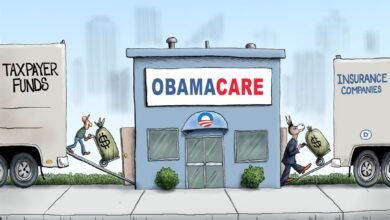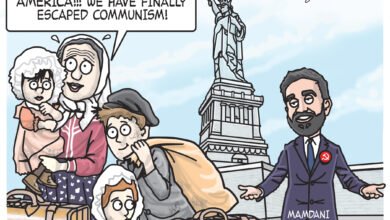Fed must avoid another mistake. Cut interest rates now
The economy is stagnant, and inflation has dropped to 2.1%. If Powell wants to stay ahead of economic downturns, now is the time to cut interest rates.
Much of the economic data for the last three months has been positive. The jobs numbers are strong; the inflation rate has fallen to near the Fed’s 2% target and there is real optimism in the business community about the future.
But the economy is not growing.
The overall goal of economic policy, as it relates directly to households, is to provide the highest standard of living. For most of the last four years, prices were rising much faster than incomes. That meant consumers had to cut back on their consumption and savings, essentially leading to a decline in their standard of living.
Since January, the inflation rate has plummeted by nearly one full percentage point. At the same income growth has accelerated. Last month, personal income grew by .8%. That’s about a 10% annual rate. The higher income, coupled with the low inflation, led to households spending and saving more. That means a higher standard of living.
However, economic growth has come to a standstill.
For much of last year, the economy was growing at a 3% annual rate. But the growth rate fell to 2.3% in the fourth quarter. In the first quarter of this year, growth was negative.
The correct Monetary Policy at this point is to gradually stimulate the economy. That’s partially accomplished by lowering interest rates. Powell’s Fed is reluctant.
Although Powell says he likes to be in front of economic change, he has always been far behind. Now he is making another major mistake.
Powell says that stimulation to the economy now could increase inflation. This is especially true, he says, considering it is difficult to forecast the impact of the current administration’s tariff policy on inflation.
The US has collected almost $70 billion from tariffs this year. And inflation is coming down.
Admittedly, some products will see large price increases. But other statistically influential products like energy will see declining prices. The overall inflation rate will continue to fall, just like it did five years ago.
If the prospect of future inflation is kept in perspective, the Fed made a mistake by not cutting interest rates last month. They meet again this month. At that meeting, it is imperative for economic growth that the Fed cut interest rates.
Most of my colleagues are forecasting that the Fed will not cut interest rates until September and again in December. If that is correct, the economy will continue to stagnate.
Powell’s Fed has made mistake after mistake since 2018, when, for no apparent economic reason, he raised interest rates four times. That choked off much of the stimulus from the tax cut. He realized he had made a mistake and lowered interest rates in 2019.
Then from January 2021 to June 2022, Powell’s Fed ballooned the money supply threw their bond buying program, and kept interest rates near zero. That allowed inflation to increase to over a 9% annual rate. That was their biggest mistake.
In June 2022, Powell’s Fed finally began to raise interest rates. But then they mistakenly stopped raising rates in July 2023, when the Fed Funds Rate was just over 5%. A 6% rate would have ended the high inflation. That mistake allowed inflation to linger
It lingered through much of 2024, but by mid-year, inflation was finally falling. For some unjustified reason, Powell’s Fed decided to cut interest rates three times in four months at the end of 2024. That mistake caused inflation to increase.
The Federal Reserve has two specific goals, each requiring action that generally does not benefit the other. They try to keep prices stable, and they try to have healthy growth in the economy. During different time periods the goals have different priorities.
Currently, inflation has essentially reached the Fed’s target, and the economy appears to be stagnant, or at best, growing slowly. There is no reason to keep interest rates above a growth-stimulating level, which is where they are now.
The current tariff policy, coupled with deregulation, large foreign investment and low energy prices, will result in the long-term inflation rate less than 2%.
As such, the Fed must concentrate on economic growth and cut interest rates at its June meeting.
Agree/Disagree with the author(s)? Let them know in the comments below and be heard by 10’s of thousands of CDN readers each day!




